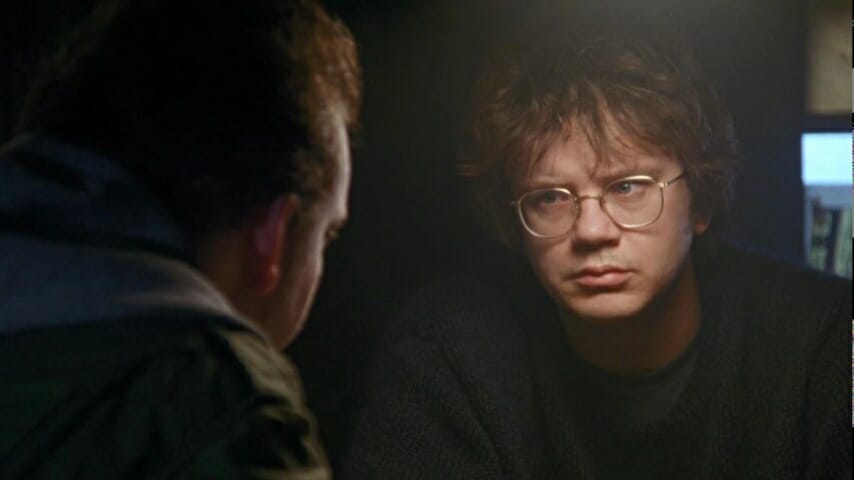Autumn Classics: Jacob’s Ladder
The paranoid, surreal tragedy turns 30.

As the gentle wind beckons through the leaves and autumn colors fall, many movie fans like to return to the spooky, macabre or melancholy films that evoke the feeling of the season. Ken Lowe is revisiting these Autumn Classics throughout the month of October. You can read up on all past entries here.
At the bottom of the steps she stands waiting, with a smile of ineffable joy, an attitude of matchless grace and dignity. Ah, how beautiful she is! He springs forward with extended arms. As he is about to clasp her he feels a stunning blow upon the back of the neck; a blinding white light blazes all about him with a sound like the shock of a cannon—then all is darkness and silence! —“An Occurrence at Owl Creek Bridge,” by Ambrose Bierce
The folly and waste of the Vietnam War are beginning to pass out of memory, and with them the brand of conspiracy thriller rooted in the paranoia and distrust of the post-Nixon era. People compared Captain America: The Winter Soldier to that sort of thing, but it sort of doesn’t count if the conspiracy is “An off-brand undead Nazi living on through miles of magnetic tape using flying fortresses to shoot lasers.” Conspiracies, surveillance, burying the truth through abduction and murder, and mind-altering drugs are much more like it.
Jacob’s Ladder very much has that exact sort of ’70s-style paranoia embedded in its DNA, strangely out of place considering it came out in 1990. Stranger still is the streak of gory, uncanny, aggressive grotesquerie it employs to shock and frighten the audience in ways that have nothing at all to do with shady government bag-men or drug-fueled conspiracies. It’s an imperfect film with plot points and characters that fizzle out or vanish, one whose precise ending director Adrian Lyne didn’t seem sure of—two alternate endings, one of them involving elaborate and truly unpleasant practical effects, were filmed and aren’t even close to the one that made it to theaters.
It’s also luridly unforgettable.

Jezzie: Creatures? Jake, New York is filled with creatures.
The movie is framed by scenes of a medical chopper evacuating Vietnam veteran Jacob Singer (Tim Robbins). In his past, Jake remembers a harrowing attack in Vietnam that cut down his platoon and wounded him. In the gray, perpetually chilly New York City of the present, he is estranged from his wife and children and reeling from the death of his son (an uncredited Macaulay Culkin). Living with a coworker, Jezzie (Elizabeth Peña), Jake struggles to get through each day, persistently haunted by disturbing images and a city that seems to be out to get him.
One of the most unsettling aspects of the movie is Lyne’s masterful transition between the mundane grittiness of ’70s New York and the sudden turns into surrealist horror. In each case it builds slowly at first, introducing off-putting but plausible elements right up until the moment when reality goes out to lunch entirely. In such scenes, the viewer ends up feeling like a frog who hasn’t realized the pot of water is getting hotter until the moment it reaches a boil. Frogs don’t actually do that, but neither do humans do this:
In one early scene, Jake discovers he’s fallen asleep on the subway—it happens when you’re reading Camus). He shares the car with a mute old woman who won’t answer his polite questions about where exactly he is or whether he’s missed his stop. The interior of the train is clogged with litter. It is no more surreal than any other ride on public transit in the dead of night in an uncaring megalopolis, and neither is the chained-over stairway that traps Jake underground. In desperation he decides to cross the tracks to reach the opposite platform’s exit, only to nearly be run down by a train filled with ghoulish not-quite-human creatures.
-

-

-

-

-

-

-

-

-

-

-

-

-

-

-

-

-

-

-

-

-

-

-

-

-

-

-

-

-

-

-

-

-

-

-

-

-

-

-

-










































